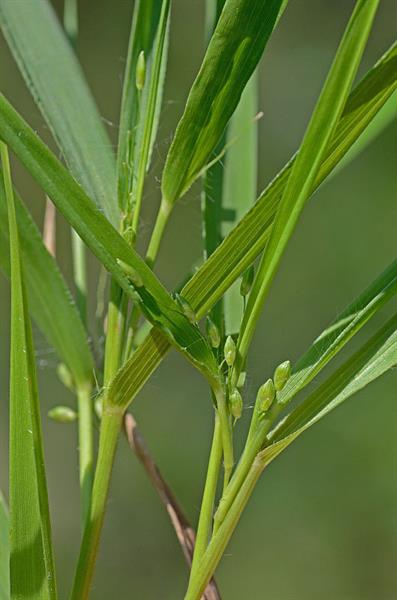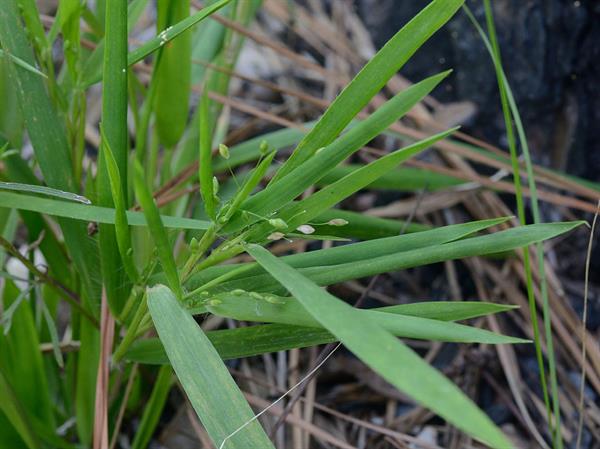
ID notes:Dichanthelium bicknellii is distinguished by blades 20× or more as long as wide, increasing in length on the culm distally, and with a usually strongly scabrous adaxial surface.
Origin/Endemic status: Native
Synonymy: = NY, LeBlond (2016); = Panicum bicknellii Nash – F, HC, RAB, S; = Panicum bicknellii Nash var. bicknellii – G; < Dichanthelium boreale (Nash) Freckmann – FNA25, K1, K3, K4, Pa, Gould & Clark (1978); > Panicum bicknellii Nash var. calliphyllum (Ashe) Gleason; < Panicum boreale Nash – C; > Panicum calliphyllum Ashe
Wetland Indicator Status:
- Atlantic and Gulf Coastal Plain: FACU (taxonomic split from wetland indicator species)
- Eastern Mountains and Piedmont: FACU (taxonomic split from wetland indicator species)
- Great Plains: FACU (taxonomic split from wetland indicator species)
- Midwest: FAC (taxonomic split from wetland indicator species)
- Northcentral & Northeast: FAC (taxonomic split from wetland indicator species)
Heliophily: 6
Hover over a shape, letter, icon, or arrow on the map for definition or see the legend.
 © Gary P. Fleming | Original Image ⭷
© Gary P. Fleming | Original Image ⭷ © Gary P. Fleming | Original Image ⭷
© Gary P. Fleming | Original Image ⭷Feedback
See something wrong or missing on about Dichanthelium bicknellii? Let us know here: (Please include your name and email if at all complicated so we can clarify if needed.)
Cite as...